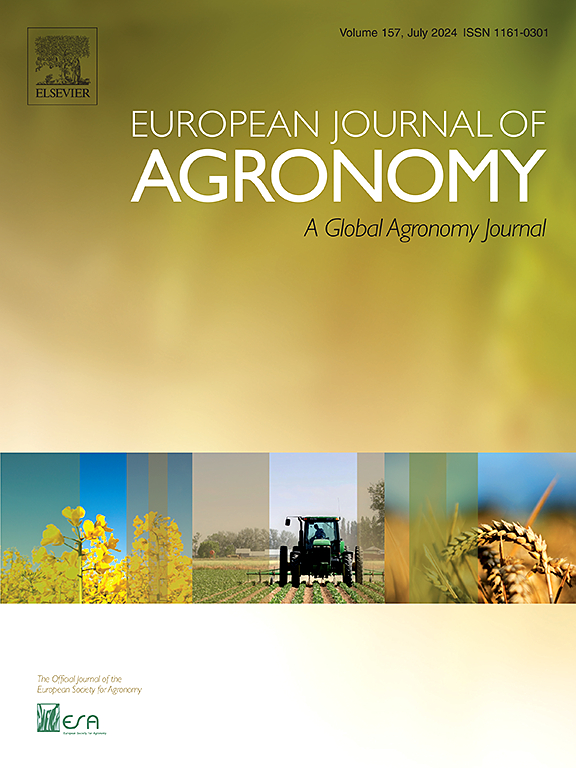A study on optimal input images for rice yield prediction models using CNN with UAV imagery and its reasoning using explainable AI
IF 4.5
1区 农林科学
Q1 AGRONOMY
引用次数: 0
Abstract
Rice is the world's most consumed staple food crop and there is a need to increase its yield in terms of food security. Understanding rice yields is important for farmers and national decision-making, and is critical for increasing yields. Remote sensing and machine learning have improved the accuracy and efficiency of yield monitoring. In particular, the combination of unmanned aerial vehicles (UAV) and convolutional neural networks (CNN), which is a type of deep learning, has been studied in recent years owing to its flexibility in data acquisition and high accuracy. Rice yield predictions using UAV and CNN have been reported to build more robust models after the mid-ripening stage. However, optimal input image conditions, such as the growth stage of image acquisition, spectral bands, and image cut-out areas, have not been studied, and there is room for improvement in this respect. In addition, recent efforts to find clues to improve the reliability and accuracy of advanced machine learning models have focused on explainable artificial intelligence (XAI), which attempts to reveal the basis of model inferences. However, there are almost no examples of using XAI for regression tasks with CNN in the research field of agricultural sciences. Therefore, in this study, the optimal input image conditions were investigated for the prediction of rice yield using a CNN based on UAV aerial images collected after the mid-ripening stage. An attempt was made to provide a rationale for the results by visualizing the region of interest in the CNN model. First, using red edge spectral bands at the maturity stage was more effective than at the mid-ripening stage. In addition, higher accuracy was achieved by allowing feature extraction from a slightly wider area than the actual harvested area, especially at the maturity stage. Furthermore, visualization of the region of interest showed that yield prediction was more focused on panicles at the maturity stage. This provided a relevant rationale for optimal input image conditions. In summary, this study identified the optimal input image conditions that enabled yield prediction with higher accuracy. Additionally, using XAI, which visualizes the region of interest, increases the trustworthiness of the model outputs. The results of this study will improve the accuracy and reliability of yield prediction models.
求助全文
约1分钟内获得全文
求助全文
来源期刊

European Journal of Agronomy
农林科学-农艺学
CiteScore
8.30
自引率
7.70%
发文量
187
审稿时长
4.5 months
期刊介绍:
The European Journal of Agronomy, the official journal of the European Society for Agronomy, publishes original research papers reporting experimental and theoretical contributions to field-based agronomy and crop science. The journal will consider research at the field level for agricultural, horticultural and tree crops, that uses comprehensive and explanatory approaches. The EJA covers the following topics:
crop physiology
crop production and management including irrigation, fertilization and soil management
agroclimatology and modelling
plant-soil relationships
crop quality and post-harvest physiology
farming and cropping systems
agroecosystems and the environment
crop-weed interactions and management
organic farming
horticultural crops
papers from the European Society for Agronomy bi-annual meetings
In determining the suitability of submitted articles for publication, particular scrutiny is placed on the degree of novelty and significance of the research and the extent to which it adds to existing knowledge in agronomy.
 求助内容:
求助内容: 应助结果提醒方式:
应助结果提醒方式:


